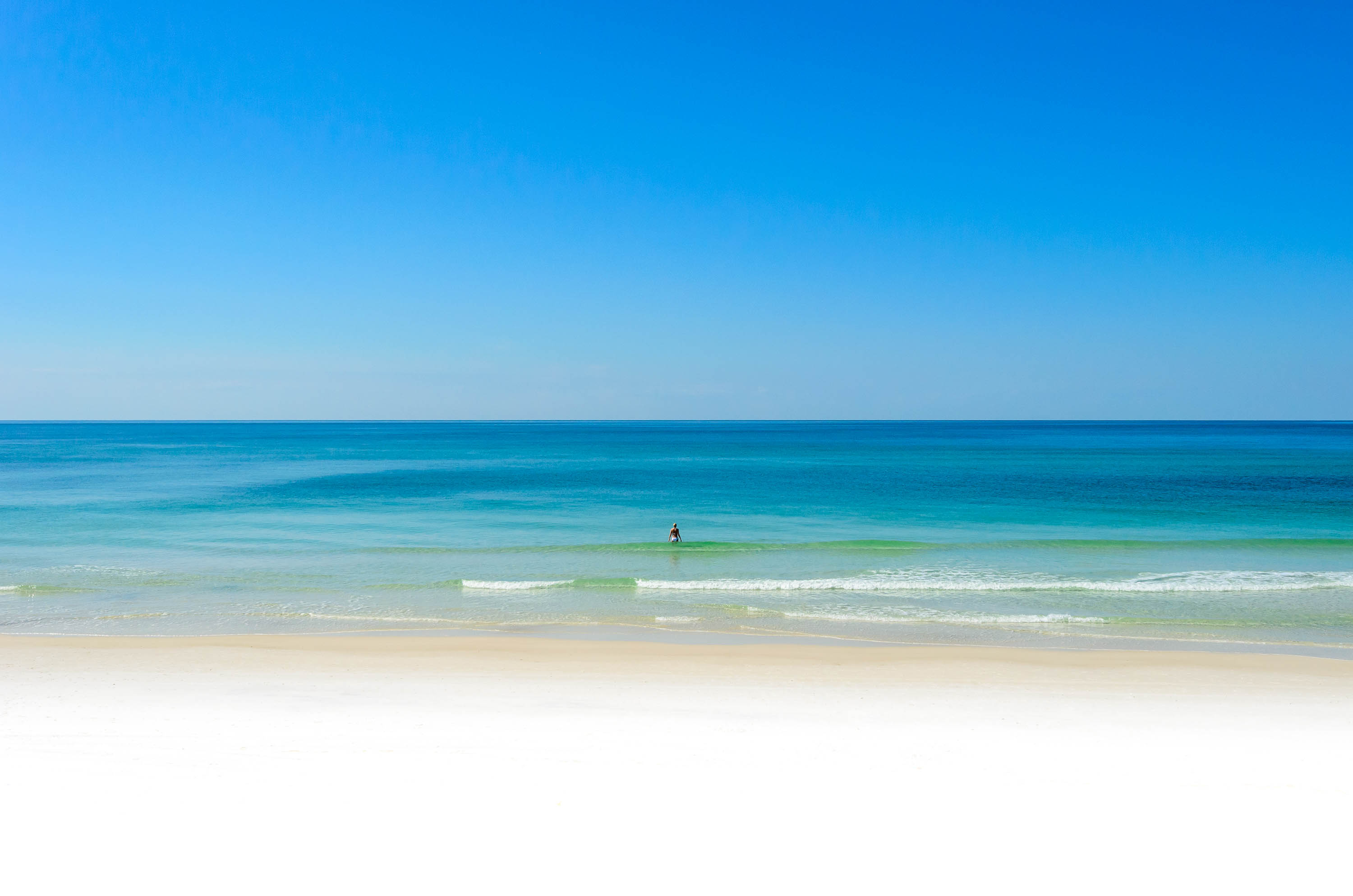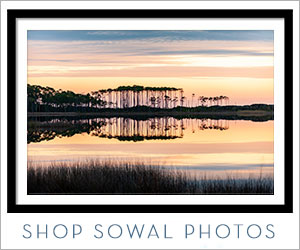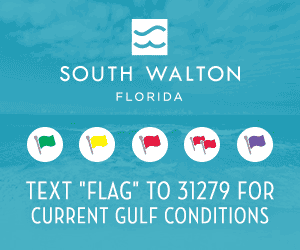Every time I read Tona-Rama (T-R) I understand a little better what T-R was and was not. I think I understand the doctrine of public customary use of private property better now than the first time I read T-R. I have a layman’s understanding of the principles of property rights and public customary use of private property, not the technical legal proceedings, but I think not being an attorney can be a good thing. Laypersons are not wrapped up the legal processes and bureaucracy and can focus on the facts. This post is for private property owners who hear over and over that T-R legalized customary use of Florida private beachfront. Property owners should consider the credibility of the sources that state anything other than T-R was prescriptive easement case that recognize the doctrine of custom but created more questions than answers. If you dispute any fact or disagree; please reply with your own alternative facts, not with emotional shout-downs or at least have some verifiable information for your opinions please. The credibility of the posts depends on it.
Facts.
1974. The plaintiff Tona-Rama, Inc. lost their litigation in the FL Supreme court!
1. Tona-Rama was litigation between two (2) private commercial beachfront businesses on Daytona Beach, Plaintiff Tona-Rama, Inc. (T-R) and Defendant McMillan and Wright, Inc. (M&W).
2. M&W owned 15,300 sq ft of private commercial beach to the Mean High Water Line (MHWL) with a 1,050 foot for profit pier. M&W had owned the property for more than 65 years! M&W provided such attractions as fishing space, helicopter flights, dances and sky lift.
3. October 1969 M&W and the City of Daytona Beach petitioned and obtained a permit to build a $125,000, 176 ft high, 75 ft diameter (225 sq ft ), for profit observation tower [Space Needle], on of private beachfront accessible from the M&W amusement pier.
4. After beach construction started next to the M&W private pier but before completion of the Space Needle tower; the Attorney General of Florida and Tona-Rama, Inc., a rival beach tower owner, filed for a declaratory judgment as to ownership of the land and for injunctive relief restraining M&W from building their competing amusement tower.
5. The trial court refused to issue T-R a temporary injunction and the tower was completed.
6. The court then entered summary judgment for plaintiffs [T-R], finding that the public had acquired a prescriptive right to use M&W private land as a bathing beach, thoroughfare, recreation area and playground, the City of Daytona Beach had improperly granted the building permit.
7. The corporation [M&W] was ordered by the court to remove the M&W observation tower but was allowed to continue construction under appeal.
8. The district court of appeal affirmed the finding of the trial court public prescriptive easement [T-R prevails] on M&W private property, despite M&W’s contention that public use of the dry sand area was not sufficiently adverse to the owner's interest to raise a prescriptive easement.
9. Appeal case was certified to FL Supreme Court as being one which passes on a question of great public interest.
10. The Florida Supreme Court (FSC) found that the public had NOT gained a prescriptive right to M&W private propriety. Declaring that existing public uses of the beach were "consistent" with erection of the private M&W tower. FSC dictum; “neither the trial court, nor the District Court, reached the other requirement for prescription to be properly effective adverse possession inconsistent with the owner's use and enjoyment of the land.”
“The use of the property by the public was not against, but was in furtherance of, the interest of the defendant owner. Such use was not injurious to the owner and there was no invasion of the owner's right to the property. Unless the owner loses something, the public could obtain no easement by prescription. J.C. Vereen & Sons v. Houser, supra.”
11. The [FSC] decision of the District Court of Appeal is quashed and this cause is remanded to the District Court with instructions to further remand the same to the trial court for the purpose of entering final judgment for defendant [M&W]. T-R loses and M&W tower prevails and the public had no right of access to the private property and the M&W tower could remain.
Observations.
But wait! .... FSC also cites Tiffany Real Property, (Third Edition), Vol. 3 English common law customary use doctrine (pp. 623-624)! To justify the public having public access to private property despite no prescriptive easement on M&W private beach.
From Tiffany; the custom, to be valid, [1] 'must have continued from time immemorial, [2] without interruption, and [3] as of right; [4] it must be certain as to the place, and [5] as to the persons; and it must be [6] certain and [7] reasonable as to the subject matter or rights created.'
Where did the ancient English customary use doctrine come from in a prescriptive easement litigation??? None of the parties brought up public customary use rights.
Tona-Rama was a public prescriptive easement litigation and the FSC just declared there was NO public prescriptive easement right on M&W private beachfront property and M&W could keep in place the $125,000 for profit Space Needle tower on their 225 sq ft of private beach based on the evidence for and against a public prescriptive easement. Done.
Where was the legal evidence presented of public customary use of M&W private property! There was NONE. The FSC for the first time ever discussed or recognized in the dicta the doctrine of Customary Use in Tona-Rama dicta, sua sponte [Latin term usually applied to actions by a judge taken without a prior motion or request from the parties].
FSC immediately states following Tiffany; “If the recreational use of the sandy area adjacent to mean high tide has been [1] ancient, [2] reasonable, [3] without interruption and [4] free from dispute, such use, as a matter of custom, should not be interfered with by the owner.” That’s not what Tiffany says! Where’s Tiffany’s and Blackstone’s [3], [4], [5], and [6]? What does customary “free from dispute” mean?
Even Walton’s customary use attorney [and Destin’s 2002 attorney] David Theriaque September 2018 presentation cites English Sir William Blacksone 1765-1770 English common law “Commentaries” seven (7) custom criteria and describes them from Thornton v Hay.

That is NOT FSC interpreting common law; that’s making new uncommon law from the bench.
Importantly, the FSC in its 1974 dicta never discussed whether the doctrine of Customary Use was consistent with the U.S. Constitution (5th and 14th Amendments) or FL Statute section 2.01, (enacted Nov. 6, 1829): The common and statute laws of England which are of a general and not a local nature, with the exception hereinafter mentioned, down to the 4th day of July, 1776, are declared to be of force in this state; provided, the said statutes and common law be not inconsistent with the Constitution and laws of the United States and the acts of the Legislature of this state.
The Florida Supreme Court overruled the lower courts and Tona-Rama lost and M&W was able to keep the Space Needle tower. Because there was NO adverse public possession of private beachfront and NO public prescriptive rights to M&W private property.
Then just in case we wanted to know the FSC court out of the blue brings up an arcane old English common law of custom, removes 4 of the 7 common law criteria, and makes up a new law criteria. To justify public use of private property with no evidence of public customary use when no prescriptive right was found?
So before property owners listen to the CU agenda on the 1974 FSC Tona-Rama and the dicta, you might read the details of the 1974 Tona-Rama case and the Constitutional challenge in front of Judge Green now and likely the Appeals, FSC, and US Supreme Court. All upper courts that have more conservative-justices than not that should interpret the old English common law of custom and whether it is repugnant to the US Constitution; not make it up as they go.
It’s only going to take multi-millions of Walton tax payers dollars to find out the facts in court and many years of and anti-social media ill will. CUnCourt.
If you dispute any fact or disagree; please reply with your own alternative facts, not with emotional shout-downs or at least have some verifiable information for your opinions please. The credibility of your posts depends on it.
Note. Dicta. The plural form of dictum. Term generally used to describe a court's discussion of points or questions not raised by the record or its suggestion of rules not applicable in the case at bar. Judicial dictum is an opinion by a court on a question that is not essential to its decision even though it may be directly involved.
Post sources available upon request.
Florida Coastal Property Rights
Facts.
1974. The plaintiff Tona-Rama, Inc. lost their litigation in the FL Supreme court!
1. Tona-Rama was litigation between two (2) private commercial beachfront businesses on Daytona Beach, Plaintiff Tona-Rama, Inc. (T-R) and Defendant McMillan and Wright, Inc. (M&W).
2. M&W owned 15,300 sq ft of private commercial beach to the Mean High Water Line (MHWL) with a 1,050 foot for profit pier. M&W had owned the property for more than 65 years! M&W provided such attractions as fishing space, helicopter flights, dances and sky lift.
3. October 1969 M&W and the City of Daytona Beach petitioned and obtained a permit to build a $125,000, 176 ft high, 75 ft diameter (225 sq ft ), for profit observation tower [Space Needle], on of private beachfront accessible from the M&W amusement pier.
4. After beach construction started next to the M&W private pier but before completion of the Space Needle tower; the Attorney General of Florida and Tona-Rama, Inc., a rival beach tower owner, filed for a declaratory judgment as to ownership of the land and for injunctive relief restraining M&W from building their competing amusement tower.
5. The trial court refused to issue T-R a temporary injunction and the tower was completed.
6. The court then entered summary judgment for plaintiffs [T-R], finding that the public had acquired a prescriptive right to use M&W private land as a bathing beach, thoroughfare, recreation area and playground, the City of Daytona Beach had improperly granted the building permit.
7. The corporation [M&W] was ordered by the court to remove the M&W observation tower but was allowed to continue construction under appeal.
8. The district court of appeal affirmed the finding of the trial court public prescriptive easement [T-R prevails] on M&W private property, despite M&W’s contention that public use of the dry sand area was not sufficiently adverse to the owner's interest to raise a prescriptive easement.
9. Appeal case was certified to FL Supreme Court as being one which passes on a question of great public interest.
10. The Florida Supreme Court (FSC) found that the public had NOT gained a prescriptive right to M&W private propriety. Declaring that existing public uses of the beach were "consistent" with erection of the private M&W tower. FSC dictum; “neither the trial court, nor the District Court, reached the other requirement for prescription to be properly effective adverse possession inconsistent with the owner's use and enjoyment of the land.”
“The use of the property by the public was not against, but was in furtherance of, the interest of the defendant owner. Such use was not injurious to the owner and there was no invasion of the owner's right to the property. Unless the owner loses something, the public could obtain no easement by prescription. J.C. Vereen & Sons v. Houser, supra.”
11. The [FSC] decision of the District Court of Appeal is quashed and this cause is remanded to the District Court with instructions to further remand the same to the trial court for the purpose of entering final judgment for defendant [M&W]. T-R loses and M&W tower prevails and the public had no right of access to the private property and the M&W tower could remain.
Observations.
But wait! .... FSC also cites Tiffany Real Property, (Third Edition), Vol. 3 English common law customary use doctrine (pp. 623-624)! To justify the public having public access to private property despite no prescriptive easement on M&W private beach.
From Tiffany; the custom, to be valid, [1] 'must have continued from time immemorial, [2] without interruption, and [3] as of right; [4] it must be certain as to the place, and [5] as to the persons; and it must be [6] certain and [7] reasonable as to the subject matter or rights created.'
Where did the ancient English customary use doctrine come from in a prescriptive easement litigation??? None of the parties brought up public customary use rights.
Tona-Rama was a public prescriptive easement litigation and the FSC just declared there was NO public prescriptive easement right on M&W private beachfront property and M&W could keep in place the $125,000 for profit Space Needle tower on their 225 sq ft of private beach based on the evidence for and against a public prescriptive easement. Done.
Where was the legal evidence presented of public customary use of M&W private property! There was NONE. The FSC for the first time ever discussed or recognized in the dicta the doctrine of Customary Use in Tona-Rama dicta, sua sponte [Latin term usually applied to actions by a judge taken without a prior motion or request from the parties].
FSC immediately states following Tiffany; “If the recreational use of the sandy area adjacent to mean high tide has been [1] ancient, [2] reasonable, [3] without interruption and [4] free from dispute, such use, as a matter of custom, should not be interfered with by the owner.” That’s not what Tiffany says! Where’s Tiffany’s and Blackstone’s [3], [4], [5], and [6]? What does customary “free from dispute” mean?
Even Walton’s customary use attorney [and Destin’s 2002 attorney] David Theriaque September 2018 presentation cites English Sir William Blacksone 1765-1770 English common law “Commentaries” seven (7) custom criteria and describes them from Thornton v Hay.
That is NOT FSC interpreting common law; that’s making new uncommon law from the bench.
Importantly, the FSC in its 1974 dicta never discussed whether the doctrine of Customary Use was consistent with the U.S. Constitution (5th and 14th Amendments) or FL Statute section 2.01, (enacted Nov. 6, 1829): The common and statute laws of England which are of a general and not a local nature, with the exception hereinafter mentioned, down to the 4th day of July, 1776, are declared to be of force in this state; provided, the said statutes and common law be not inconsistent with the Constitution and laws of the United States and the acts of the Legislature of this state.
The Florida Supreme Court overruled the lower courts and Tona-Rama lost and M&W was able to keep the Space Needle tower. Because there was NO adverse public possession of private beachfront and NO public prescriptive rights to M&W private property.
Then just in case we wanted to know the FSC court out of the blue brings up an arcane old English common law of custom, removes 4 of the 7 common law criteria, and makes up a new law criteria. To justify public use of private property with no evidence of public customary use when no prescriptive right was found?
So before property owners listen to the CU agenda on the 1974 FSC Tona-Rama and the dicta, you might read the details of the 1974 Tona-Rama case and the Constitutional challenge in front of Judge Green now and likely the Appeals, FSC, and US Supreme Court. All upper courts that have more conservative-justices than not that should interpret the old English common law of custom and whether it is repugnant to the US Constitution; not make it up as they go.
It’s only going to take multi-millions of Walton tax payers dollars to find out the facts in court and many years of and anti-social media ill will. CUnCourt.
If you dispute any fact or disagree; please reply with your own alternative facts, not with emotional shout-downs or at least have some verifiable information for your opinions please. The credibility of your posts depends on it.
Note. Dicta. The plural form of dictum. Term generally used to describe a court's discussion of points or questions not raised by the record or its suggestion of rules not applicable in the case at bar. Judicial dictum is an opinion by a court on a question that is not essential to its decision even though it may be directly involved.
Post sources available upon request.
Florida Coastal Property Rights
Last edited by a moderator:













